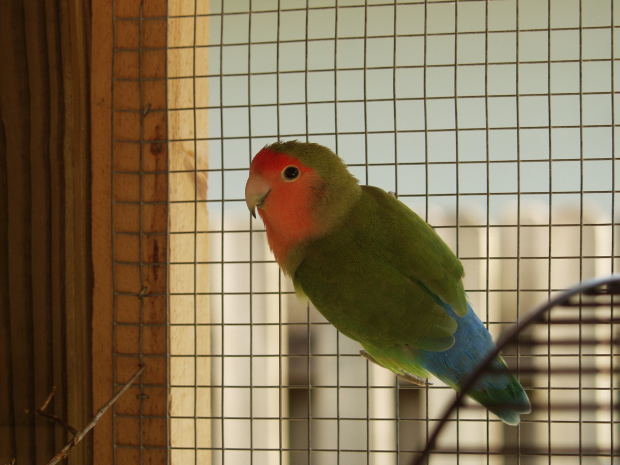With their affectionate and playful behavior, lovebirds make wonderful family pets. They rarely bite or snap out in aggression unless provoked, allowing children to pet and play with them. I guess you could say they live up their namesake of being docile and loving, which is one of the reasons why they are such a popular family pet.
It’s a common assumption that lovebirds (and other parrots for that matter) are immune to fleas. Unfortunately, however, fleas can and will attack lovebirds when given the opportunity. You may notice your lovebird scratching and/or plucking themselves in an attempt to rid themselves of the parasites.
A Little Bit About Lovebirds
There are approximately nine species of lovebirds, all of which are relatively small compared to other types of parrots. An average lovebird will grow anywhere between 5 to 6.5 inches in length and weigh 1.4-2.1 ounces. Because of their small size and “loving” behavior, lovebirds are a popular choice for families living in apartments or town homes. You can set a small cage up for your lovebird in a corner or open area of a room
Like most types of parrots, lovebirds are playful and need toys set up in their cage to keep them preoccupied. A couple of toys will give your lovebird something to do throughout the day when you are busy at work or out running errands. There are dozens of wonderful toys to use in a lovebird’s cage, such as bells, hanging ropes, perches or even fuzzy plush toys. Just remember to perform a thorough inspection of the toy beforehand to ensure it’s safe for their cage. Avoid toys with chipped paint or sharp edges, as they could potentially injure your lovebird.
Checking Your Lovebird For Fleas
Lovebird are social creatures that crave their owner’s attention. Try to spend at least 15-30 minutes each day talking and playing with them. This interaction is critical to maintaining a happy and healthy pet lovebird. You can also use this time to perform a basic physical examination while looking for signs of fleas, mites or other pests. If you see just one mite, flea or pest on your lovebird, begin a treatment regime to prevent the infestation from spiraling out of control.
How To Protect Your Lovebird From Fleas:
- Ask your veterinarian for recommendations of a flea treatment/preventative medicine.
- Fleas can sap the nutrients from a lovebird, so make sure you are feeding them a well-balanced diet that consists of either seeds and/or pellets.
- Use climate and humidity control techniques in your home to discourage fleas.
- Groom your lovebird on a regular basis to check for fleas.
- When you come across a flea on your lovebird, carefully remove it and place it inside a cup of soapy water.

